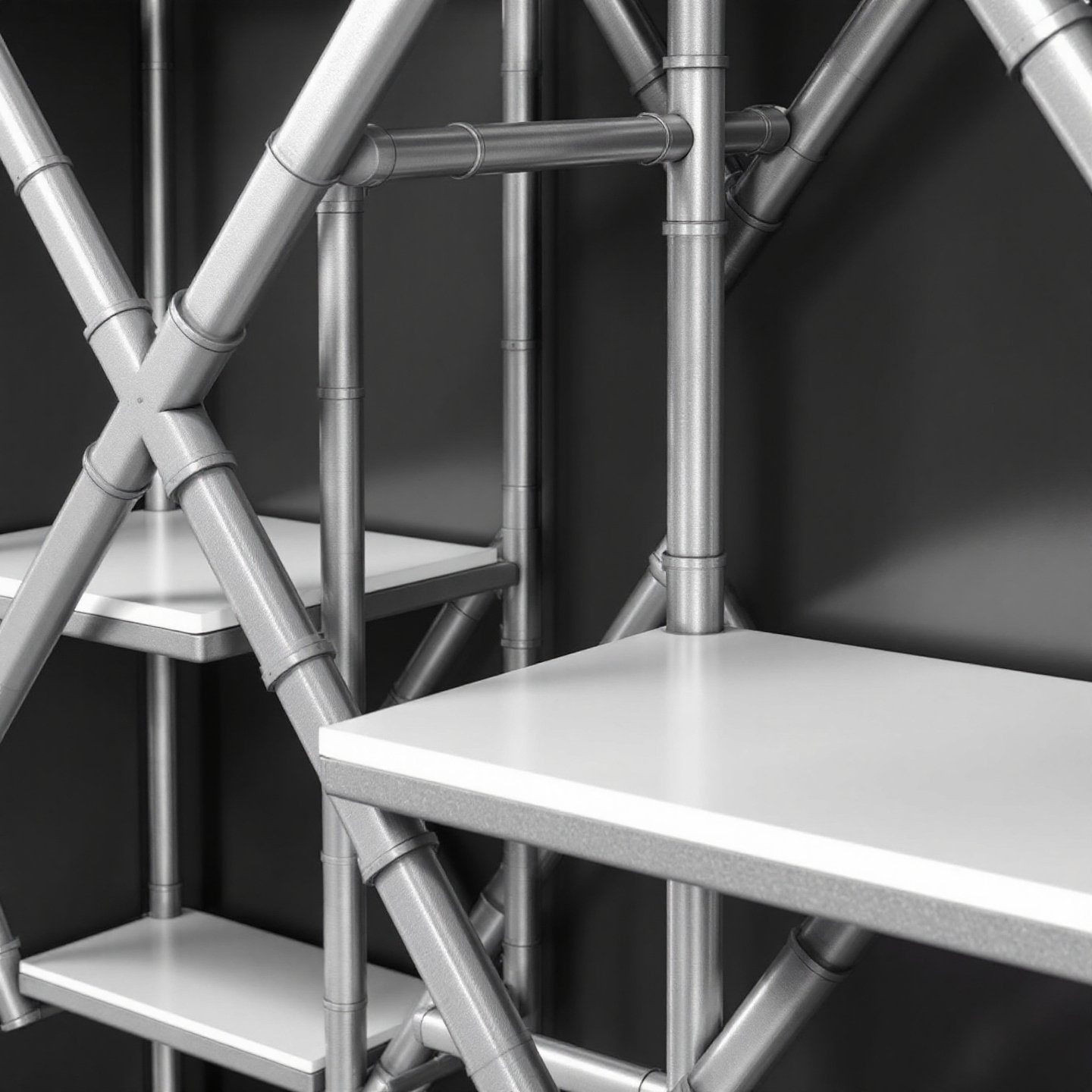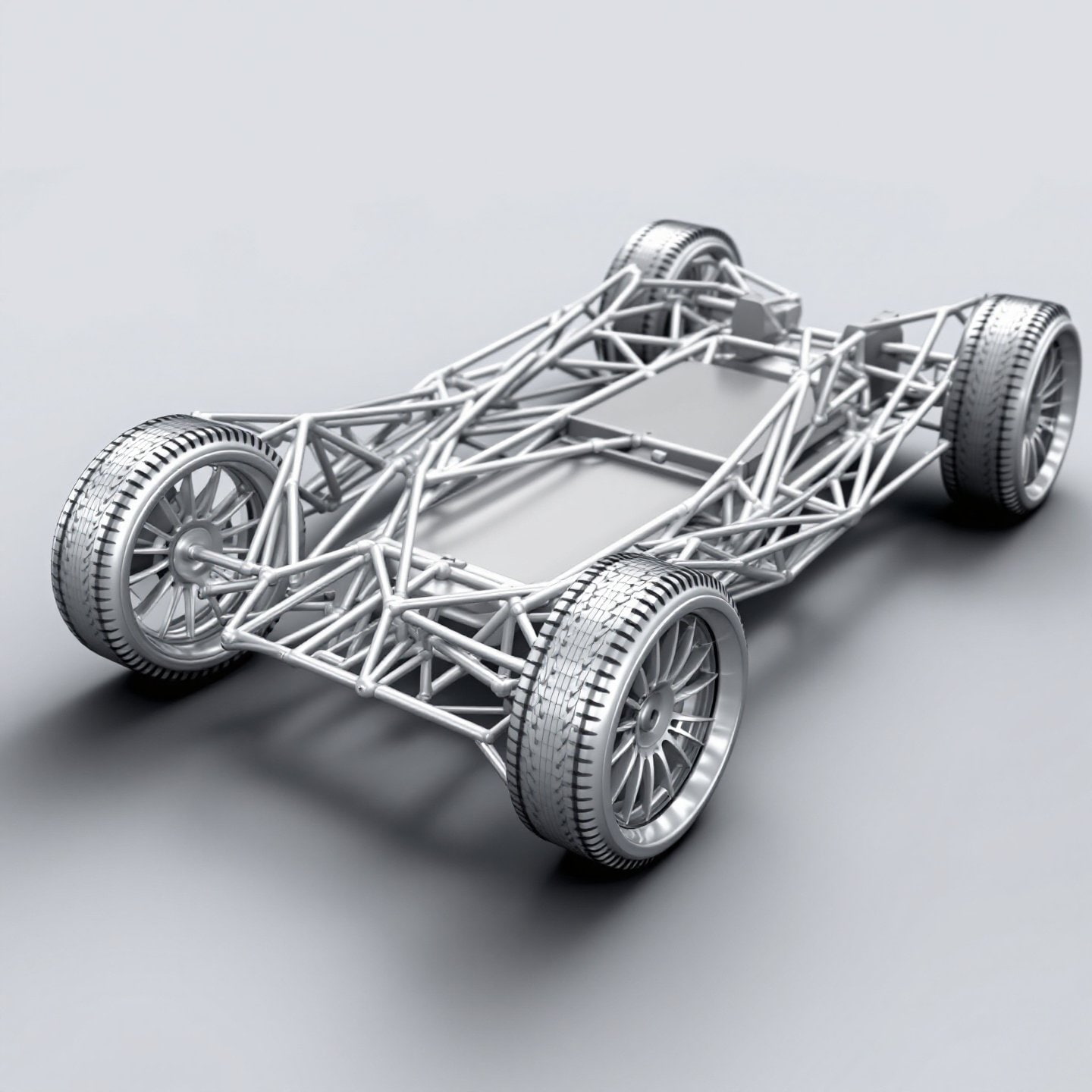Aluminum Tube Frames: Versatile, Lightweight Solutions for Modern Structures

Introduction to Aluminum Tube Frames
Imagine a construction material that offers both strength and flexibility, a combination that seems almost paradoxical. This is precisely what aluminum tube frames bring to modern construction and design. As industries continuously seek innovative solutions to meet evolving demands, the aluminum tube frame has emerged as a key player, celebrated for its unique properties and versatility.
At the heart of its growing popularity is aluminum's inherent characteristics. The material's low density makes it incredibly lightweight, facilitating easier handling and transportation. Despite its lightness, aluminum doesn't compromise on strength, providing robust structural integrity essential for various applications. This balance of strength and weight is particularly beneficial in industries where efficiency and performance are paramount.
Moreover, aluminum's natural oxide layer acts as a protective shield against corrosion, minimizing maintenance requirements and extending the lifespan of structures. This durability is a significant advantage in sectors like aerospace and automotive, where reliability is non-negotiable. Additionally, the malleability of aluminum allows for the creation of complex shapes and custom designs, offering architects and designers the freedom to innovate without constraints.
Importantly, aluminum tube frames align with sustainable construction practices. Aluminum is highly recyclable, maintaining its quality through repeated recycling processes. This attribute not only supports eco-friendly initiatives but also contributes to reducing the environmental footprint of construction projects.
Across industries—from manufacturing to architecture—the adoption of aluminum framing systems is on the rise. As noted by EZTube , these systems empower creativity and precision in bringing visionary projects to life. The seamless integration of aluminum tube frames into diverse applications underscores their indispensable role in modern engineering and design.
Advantages of Aluminum Tube Frames
When considering materials for construction and design, aluminum tube frames stand out due to their remarkable benefits. One of the most notable advantages is aluminum's low density, which significantly contributes to ease of handling and transportation. Imagine lifting a material that offers robust structural integrity without the cumbersome weight—this is the promise of aluminum. Its lightweight nature not only facilitates easy installation but also reduces transportation costs, making it an economically viable option for large-scale projects.
Strength and Durability
Despite its lightness, aluminum does not compromise on strength. It provides the necessary structural integrity required for demanding applications, ensuring safety and reliability. An often-overlooked feature is aluminum's natural oxide layer, which acts as a protective barrier against corrosion. This layer minimizes maintenance needs, making aluminum frames a long-lasting choice for both indoor and outdoor applications. This durability is particularly valuable in environments exposed to harsh weather conditions, where other materials might degrade more rapidly.
Malleability and Design Flexibility
Aluminum's malleability is another key advantage, allowing it to be crafted into complex shapes and custom designs. This flexibility gives architects and designers the freedom to innovate, creating unique structures that meet specific aesthetic and functional requirements. From intricate architectural details to streamlined industrial designs, aluminum tube frames accommodate a wide range of design possibilities.
Sustainability and Environmental Impact
In today's eco-conscious world, the sustainability of materials plays a crucial role in decision-making. Aluminum shines in this regard due to its recyclability. It can be recycled indefinitely without losing quality, contributing to a circular economy. This characteristic not only conserves resources but also reduces the environmental impact associated with primary aluminum extraction. By choosing aluminum tube frames, industries can significantly lower their carbon footprint, aligning with sustainable building practices.
In summary, the benefits of aluminum tube frames extend beyond just functionality. They offer a blend of strength, flexibility, and sustainability that modern construction demands. As industries continue to prioritize eco-friendly solutions, aluminum tube frames are poised to play a pivotal role in shaping the future of sustainable architecture and design.

Common Applications of Aluminum Tube Frames
Aluminum tube frames have become a cornerstone in various industries, thanks to their unique blend of strength, lightness, and versatility. These frames are not just structural components but pivotal elements that enhance performance and efficiency across multiple domains.
Construction Frameworks
In the construction industry, aluminum tube frames serve as the backbone for numerous structures. Their lightweight nature makes them ideal for high-rise buildings where reducing dead load is crucial. Additionally, these frames are employed in curtain walls and window frames, where their corrosion resistance and aesthetic appeal are highly valued. The ability to form complex shapes allows architects to push the boundaries of design without compromising structural integrity.
Automotive Chassis
The automotive sector has significantly benefited from the integration of aluminum tube frames. By reducing the overall weight of the vehicle, these frames contribute to improved fuel efficiency and performance. Notably, high-performance cars often utilize aluminum frames to enhance speed and agility. This application not only lowers emissions but also aligns with the industry's shift towards more sustainable practices.
Furniture Design
Aluminum tube frames are also making waves in the furniture industry. Designers leverage the material's malleability to create modern, sleek furniture pieces that are both lightweight and durable. From office chairs to modular storage systems, aluminum frames offer a blend of functionality and style, catering to contemporary design preferences.
Aerospace Applications
In aerospace, the demand for materials that offer high strength-to-weight ratios is paramount. Aluminum tube frames meet this requirement, making them indispensable in aircraft construction. They help reduce the overall weight of the aircraft, thereby enhancing fuel efficiency and payload capacity. This application underscores aluminum's role in advancing aerospace technology and innovation.
Across these industries, the use of aluminum tube frames is not just a trend but a testament to their enduring utility and adaptability. As we continue to explore new frontiers in design and engineering, the role of aluminum frames will undoubtedly expand, driving further advancements in technology and sustainability.
Exploring Aluminum Square Tube Frames
When it comes to modern construction and design, aluminum square tube frames offer a unique set of advantages that cater to a wide array of applications. Their geometric shape is not just about aesthetics; it provides functional benefits that enhance structural performance and ease of use.
Geometric Advantages and Load-Bearing Capacity
The square design of these frames contributes significantly to their load-bearing capacity. The uniform distribution of material around the cross-section allows for greater strength and stability compared to round tubes. This makes aluminum square tube frames an excellent choice for applications requiring robust support, such as in modular shelving units and support structures. Their ability to withstand substantial loads without bending or buckling ensures reliability in both static and dynamic applications.
Ease of Connection and Versatility
Another advantage of aluminum square tube frames is their compatibility with standard connectors. This feature simplifies the assembly process, allowing for quick and secure connections. The ease of connection is particularly beneficial in modular aluminum frames, where components need to be assembled and disassembled frequently. This modularity is ideal for applications like exhibition stands and temporary structures, where flexibility and adaptability are crucial.
Moreover, aluminum square tubes can be easily cut and welded, offering further customization options for specific project requirements. According to Six Aluminium , choosing the right alloy type and surface finish can enhance the frame's performance and aesthetic appeal, making it suitable for both industrial and decorative uses.
Practical Applications
In practical terms, aluminum square tube frames are utilized in various settings. For instance, in retail environments, they form the backbone of modular shelving systems that can be reconfigured to suit changing display needs. In the event and exhibition industry, these frames provide the structural integrity needed for creating eye-catching and durable stands. Their lightweight nature also means they are easy to transport and set up, saving time and labor costs.
Overall, aluminum square tube frames offer a compelling combination of strength, versatility, and ease of use, making them an invaluable component in modern construction and design. As industries continue to evolve, the demand for efficient and adaptable framing solutions like these will undoubtedly grow, paving the way for innovative applications and designs.

Aluminum Tube Frame Connectors: Types and Selection
When assembling aluminum tube frames, connectors play a crucial role in ensuring structural integrity and flexibility. These components are the unsung heroes that hold everything together, enabling the creation of complex and versatile structures. Understanding the various types of aluminum tube connectors and their applications can greatly enhance the efficiency and durability of your projects.
Types of Connectors
There are several types of connectors used in aluminum tube framing, each designed for specific functions:
- Straight Connectors: These are used to join two aluminum tubes in a linear fashion, extending the length of the frame. They are typically made from aluminum alloy and feature an anodized finish for added durability.
- Elbow Connectors: Ideal for creating 90-degree angles, elbow connectors are essential for forming corners and bends in a frame. They allow for the construction of rectangular or square structures without compromising stability.
- Tee Connectors: Used to connect three tubes at a central point, tee connectors are perfect for branching out from a main frame. They provide a sturdy junction point that can support additional structural elements.
- Cross Connectors: These connectors enable the intersection of four tubes, forming a cross-like structure. They are particularly useful in creating grids or lattice frameworks.
Choosing the Right Connectors
Selecting the appropriate connectors for your aluminum tube frame involves considering several factors:
- Load Requirements: Evaluate the weight and stress that the frame will need to support. Opt for connectors that can handle the expected load without compromising safety.
- Environmental Conditions: Consider the environment where the frame will be used. For outdoor applications, choose connectors with corrosion-resistant properties, such as those made from 6061 aluminum, known for its strength and durability in harsh conditions ( source ).
- Assembly Complexity: Some projects may require frequent assembly and disassembly. In such cases, opt for connectors that are easy to install and remove, such as external connectors that do not require tools for setup.
By understanding the different types of aluminum framing connectors and their specific applications, you can enhance the functionality and longevity of your aluminum tube frames. These connectors not only provide the necessary support but also offer flexibility in design, allowing for innovative and adaptable structures.
Case Study: Aluminum Tube Frame Chassis in Automotive Design
When you think about the evolution of automotive design, one of the most significant advancements is the use of aluminum tube frames in car chassis. This innovation is driven by the need to enhance vehicle performance while reducing weight, and aluminum has proven to be a game-changer in achieving these goals.
Weight Reduction and Fuel Efficiency
Aluminum tube frames are significantly lighter than their steel counterparts, which directly contributes to improved fuel efficiency. By reducing the vehicle's overall weight, these frames allow for better acceleration and handling, contributing to a more agile driving experience. This weight reduction is crucial in meeting stringent fuel economy standards and reducing emissions, aligning with the automotive industry's shift towards sustainability.
Enhanced Performance and Safety
Beyond fuel efficiency, aluminum tube frame chassis offer enhanced performance characteristics. The material's high strength-to-weight ratio provides the necessary structural integrity to withstand road stresses while maintaining a lightweight profile. This balance ensures that vehicles are not only fast but also safe, offering superior crash protection compared to traditional materials. The inherent flexibility of aluminum allows for better energy absorption during impacts, further enhancing passenger safety.
Notable Automotive Applications
Several high-performance vehicles have adopted aluminum tube frame chassis to harness these benefits. For instance, the Acura NSX employs a multi-material space frame that includes aluminum to enhance stiffness and reduce weight. Similarly, the BMW i8 uses a combination of aluminum castings and sheets to form its main frame, ensuring a lightweight yet robust structure. These models exemplify how aluminum frames can be integrated into automotive design to achieve superior performance and efficiency.
Another notable example is the Tesla Model S, which utilizes an aluminum space frame to support its electric powertrain. This design not only reduces weight but also optimizes the vehicle's center of gravity, enhancing stability and handling. The use of aluminum in such innovative designs underscores its critical role in the future of automotive engineering.
As the automotive industry continues to innovate, the application of aluminum tube frames in car chassis will likely expand. Their ability to improve performance, fuel efficiency, and safety makes them an invaluable component in modern vehicle design, paving the way for more sustainable and efficient transportation solutions.

Innovations in Aluminum Tube Frame Systems
Imagine a construction system that combines simplicity with versatility, allowing for quick assembly and endless customization. This is precisely what modular aluminum framing systems like EZ Tube offer. These systems have revolutionized the way we approach construction and design, making it easier than ever to create functional and aesthetically pleasing structures.
Ease of Assembly and Versatility
Modular aluminum systems are designed for ease of assembly. They typically use a series of pre-engineered components that can be easily connected without the need for specialized tools or skills. This feature not only reduces labor costs but also speeds up the construction process. The modular nature of these systems allows for easy reconfiguration, making them ideal for projects that require frequent changes or updates, such as trade show displays or temporary installations.
One of the standout features of systems like EZ Tube is their versatility. These frames can be used in a wide variety of applications, from industrial workstations to retail displays and even residential projects. The ability to customize the frame's size, shape, and configuration means that designers and engineers can tailor solutions to meet specific project requirements, enhancing both functionality and aesthetic appeal.
Technological Developments and Enhanced Functionality
Recent advancements in aluminum frame technology have further enhanced the functionality of these systems. For instance, the development of new alloys and extrusion techniques has resulted in frames that are stronger and more durable, capable of withstanding greater loads and harsher environments. Innovations in connector technology have also improved the ease of assembly and disassembly, making these systems even more user-friendly.
Moreover, the integration of smart technology into aluminum frames is opening up new possibilities. Imagine frames equipped with sensors that monitor structural integrity or adjust to environmental conditions. These innovations not only improve safety and performance but also align with the growing demand for intelligent building solutions.
As we look to the future, the role of modular aluminum systems in construction and design is set to expand. Their combination of ease of use, versatility, and technological sophistication makes them an attractive option for a wide range of applications. Whether you're constructing a new building or designing a cutting-edge exhibition, modular aluminum frames offer a flexible and innovative solution that meets the demands of modern projects.
Conclusion and Future Outlook: The Future of Aluminum Frame Solutions
As we conclude our exploration of aluminum tube frames, it's clear that these versatile structures have become indispensable in modern construction and design. The unique combination of lightweight strength, corrosion resistance, and recyclability makes aluminum frames an ideal choice for a wide range of applications, from automotive to aerospace, and beyond. Their adaptability allows for innovative designs and efficient solutions, meeting the evolving needs of various industries.
Looking ahead, the future of aluminum frames is poised to be even more exciting. Advances in material science and manufacturing techniques are set to unlock new potentials in aluminum frame design. With the development of high-performance alloys and sustainable production processes, the possibilities for creating more durable and eco-friendly structures are expanding. This evolution is not just about enhancing performance but also about addressing the growing demand for sustainable construction practices.
Moreover, the integration of smart technology into aluminum frames is anticipated to revolutionize their functionality. Imagine structures that can monitor their own integrity or adapt to environmental changes automatically. These innovations will not only improve safety and efficiency but also align with the increasing trend towards intelligent building solutions.
For those considering aluminum solutions for their projects, companies like Suqian Sunmay Aluminium offer a wide array of high-quality aluminum profiles. With expertise in crafting premium alloys and a commitment to sustainability, they provide products that cater to diverse applications, ensuring both performance and aesthetic appeal. As the industry continues to innovate, embracing the potential of aluminum tube frames will undoubtedly lead to groundbreaking developments in design and construction, shaping the future of architectural and industrial landscapes.
Frequently Asked Questions about Aluminum Tube Frames
1. Is aluminum tubing as strong as steel?
Aluminum tubing is lighter than steel, offering a high strength-to-weight ratio. While not as strong as steel in tensile strength, aluminum's corrosion resistance and flexibility make it ideal for applications where weight reduction is crucial.
2. What are the disadvantages of aluminum tubes?
Aluminum tubes can be less durable than steel in high-impact environments and may require careful handling in abrasive conditions. However, their lightweight and corrosion-resistant properties often outweigh these drawbacks.
3. How are aluminum tube frames used in automotive design?
Aluminum tube frames in automotive design reduce vehicle weight, enhancing fuel efficiency and performance. They provide structural integrity and safety, often used in high-performance and electric vehicles.
4. What are the benefits of using aluminum square tube frames?
Aluminum square tube frames offer increased load-bearing capacity and ease of assembly due to their geometric design. They are ideal for modular systems, providing stability and versatility in various applications.
5. How does aluminum's recyclability benefit construction projects?
Aluminum's recyclability supports sustainable construction by reducing environmental impact. It maintains quality through recycling, promoting a circular economy and lowering the carbon footprint of projects.